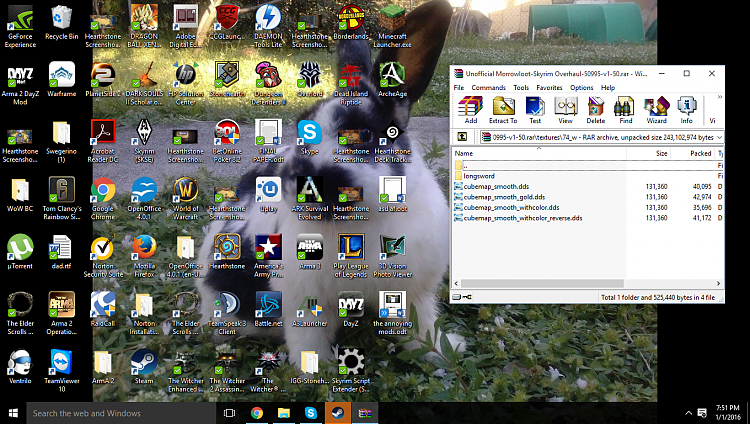The migration of Microsoft Edge from EdgeHTML to Chromium allowed Microsoft to make the browser a cross-platform application, so instead of being limited to just Windows 10, it’s also available on other Windows and non-Windows platforms.
In June 2020, users criticized newly released Windows 7, Windows 8.1 and Windows 10 updates that installed Edge and imported some user data from Chrome and Firefox prior to obtaining user permission. Microsoft responded stating that if a user rejects giving Edge data import permission, then Edge will delete the imported data.
- In addition to Windows 10, 8, and 7, you can also get Microsoft's Chromium-based Edge browser for macOS, iOS, and Android. The biggest difference that most people see between Chromium Edge and the original Microsoft Edge is plug-in support.
- Right on schedule, Microsoft today launched its new Edge browser based on Google’s Chromium open source project. You can download Chromium Edge now for Windows 7, Windows 8, Windows 10, and macOS.
- Microsoft has released a new Chromium-based version of Microsoft Edge. This new version provides best in class compatibility with extensions and websites. Additionally, this new version provides great support for the latest rendering capabilities, modern web applications, and powerful developer tools across all supported OS platforms.
So right now, the Chromium-powered Microsoft Edge can be installed on Windows 7, Windows 8, Windows 8.1, Windows 10, and macOS, with a Linux version also on its way without a specific ETA.
As far as Windows 7 users are concerned, the browser will be supported until July 2021, so if you’re still running the 2009 operating system, you can continue using Microsoft Edge on your device for one more year.
Microsoft Edge landed on Windows 7 earlier this year as a manual download, with the dedicated installers allowing users to install the browser just like any other application.
More recently, however, Microsoft has also started the automatic rollout of Microsoft Edge to Windows 7 devices via Windows Update. In other words, those running Windows 7 are getting the browser no matter they like it or not, and it’s all thanks to update KB4567409.
But as compared to Windows 10, where the new Edge becomes the default browser on systems running this operating system, the automatic update on Windows 7 comes with a different set of changes.
First and foremost, the update is only aimed at consumer versions of Windows 7.
“This update is not intended to target Enterprise devices. Specifically, this update targets devices that run Windows 7 SP1 or later versions and Windows 8.1 or later versions that are either Home, Professional, Ultimate, Starter, or Core editions. Devices that run these editions on Active Directory or Azure Active Directory domain are also excluded from this automatic update,” Microsoft explains.
Then, once the new browser is installed with this update, its icon is automatically pinned to the taskbar, while a shortcut is added to the desktop. If you previously installed the new Microsoft Edge manually on your Windows 7 device, this update replaces the shortcut, thus pointing to you to this new version.
What’s important to know is that Microsoft Edge on Windows 7 isn’t supposed to replace Internet Explorer – as compared to Windows 10, Windows 7 shipped with Internet Explorer as the default browser, but Microsoft Edge, on the other hand, isn’t supposed to completely replace IE. So Microsoft Edge lands on Windows 7 without this goal in mind, but to allow users to choose what browser they want to stick with going forward.
And this is why Microsoft Edge also isn’t configured as the default browser on the device, so if you’re running Google Chrome or Mozilla Firefox, no change is going to take place on the computer. This means that while the new Microsoft Edge is installed on the device, you can continue using whatever browser you like just like before.
And of course, if you don’t like Edge, you can just remove the taskbar icon and the desktop shortcut and then forget it exists. Needless to say, you can also uninstall the browser completely and also remove the update if you want to return to the original configuration.
Windows 7 no longer receives updates since January this year when it officially reached the end of support, so it’s now another abandoned platform, with Microsoft recommending everyone to upgrade to Windows 10. In other words, this is pretty much the only update that you’re going to get, as Windows 7 is otherwise an outdated operating system that you should no longer use going forward.

I ran Chromium Edge on Windows 7 out of curiosity and it went surprisingly well. Even though January 14, 2020 is the date when Microsoft support for Windows 7 officially ended, there are still many computers around that run this unsupported version of Windows for several different reasons. I’m not saying you should continue running Windows 7, but if you are you might also want to know about Chromium Edge on your machine.
Feel free to read on below and follow my steps.
Chromium Edge on Windows 7 - Is it Compatible?
Running Chromium Edge On Windows 7 may not sound like a big deal, but Chromium Edge officially came out in January 2020, right at the time when support for Windows 7 was announced to be terminated.
It wouldn’t be unimaginable then that Chromium Edge would not be compatible with Windows 7. Especially since the Chromium Edge download page specifically mentions that Chromium Edge is compatible with all supported versions of Windows (which Windows 7 is not).
But in fact it is.
On my Windows 7 test machine, I went over to the Chromium Edge download link and clicked the link to download the package.
At that stage, it became clear that Microsoft already sounded a bit more forgiving:
The download page detected the Windows 7 operating system and automatically suggested a Chromium Edge download package for Windows 7. So far for the “compatible with supported versions of Windows” announcement.
Upon clicking the download button (and accepting the terms and conditions), Internet Explorer wants to know whether you intend to run or save the package.
At that point, you can click “run” to continue the installation of Chromium Edge on Windows 7.
Next, you might get a user account control window asking for permission to continue the setup.
Click yes to continue.
Edge Chromium Windows 7 Free
A download progress screen will then appear while the installation continues.
Edge Chromium Windows 7 Product
A few moments later, you will be greeted with a “Welcome to the new Microsoft Edge” screen, where you can click the get started button to get started.
And that’s it! That’s how easy it is to install and run new Chromium Edge on Windows 7. Now you might run into a specific situation where the combination of things that you are actually trying to do with Chromium Edge on your Windows 7 gets you in trouble, but at this point, I’m not aware of any such combination.
Maybe that some special Chromium Edge extension that you’re trying to run gives you a compatibility issue with Windows 7, but as long as you’re just trying to run a contemporary browser on a not-so-contemporary version of Windows, running Chromium Edge on Windows 7 is easy as one two three.
As mentioned earlier, there can be several different reasons why you want to run an outdated version of Windows, but currently that doesn’t mean you cannot run Chromium Edge.
Edge Chromium Windows 7 Download
Want to find out more about the new Chromium Edge? Click here to go to my Chromium Edge overview page where you will find more articles at the bottom of the page.
Edge For Windows 7 X86
If you've enjoyed this article or found it useful, I'd appreciate it if you'd let me know by clicking the Like (or Share) button below. Thank you!
New! Comments
Have your say about what you just read! Leave me a comment in the box below.